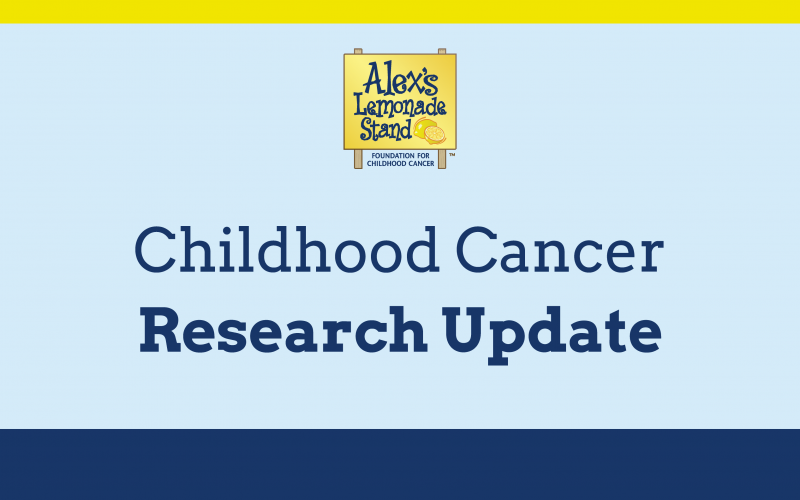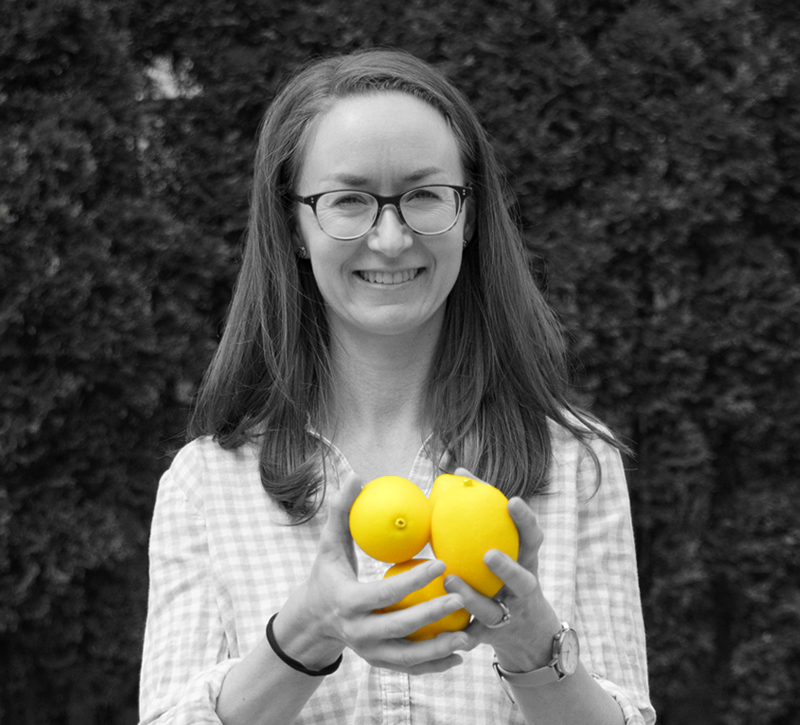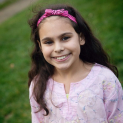
By: Anna C. Greene, PhD, ALSF Director of Science
As the Alex’s Lemonade Stand Foundation (ALSF) Director of Science, I work to evaluate our funded research projects to track progress and find gaps in funding so that we can direct more research dollars to the largest areas of need, and to understand the challenges researchers face on a day-to-day basis. I am so excited about where the field of childhood cancer research is going, and I look forward to sharing breakthroughs more often.
Each quarter, I will highlight a few research projects that I think are both interesting and impactful. ALSF has funded more than 1,000 research projects to date. Every research project ALSF funds leads to more knowledge gained about childhood cancer and makes strides toward improved treatments. At ALSF, we fund research across the biomedical spectrum from basic research that aims to discover the biological fundamentals of childhood cancer to clinical trials that aim to assess the safety and efficacy of new therapies.
In this edition, I am excited to share with you three projects. The first study highlights improved long term outcomes for children with high-risk neuroblastoma who are given the immunotherapy dinutuximab. The second study illustrates the importance of understanding the features of relapsed medulloblastoma and obtaining a definitive molecular diagnosis upon relapse, and finally, the last study emphasizes the importance of improved study designs to ensure more children are able to access novel therapies in a clinical trial.
1. The Immunotherapy Dinutuximab Provides Improved Long Term Outcomes for Children with High-Risk Neuroblastoma
Long term outcomes have been published in Clinical Cancer Research from an important randomized Phase 3 clinical trial, ANBL0032, that was run at ALSF Centers of Excellence. Phase 3 trials compare a new therapy to standard-of-care to see if the new drug is safe and effective. This trial examined the efficacy of treating children with high-risk neuroblastoma with an anti-GD2 monoclonal antibody immunotherapy, dinutuximab. Previously, this trial demonstrated improved two-year survival benefits for the children in the trial receiving dinutuximab, leading to the FDA-approval of this drug.
This study found that for 226 patients, the five-year event-free survival (without relapse or progression) was 56.6% for patients taking the immunotherapy versus 46% for those who were not. Overall, five-year survival was 73.2% versus 56.6% for those taking immunotherapy or not, respectively. This pivotal study shows improved long term outcomes for children with high-risk neuroblastoma when being treated with the immunotherapy dinutuximab, illustrating the importance of continued research and pursuit of new therapeutic approaches for those with difficult-to-treat diseases.
2. Clinical Outcomes and Molecular Features of Relapsed Medulloblastoma
A team of researchers, including ALSF Young Investigator, Vijay Ramaswamy, MD/PhD, studied the clinical outcomes and molecular features of children with medulloblastoma, a type of brain tumor, who relapsed after initial therapy. Developing a deeper understanding of the biological basis of relapse is important so that new therapies targeting these vulnerabilities can be developed. Salvage treatments that aim to cure a child who has relapsed or become refractory to care are not effective enough, with an approximate five-year post-relapse survival rate of 10%.
Speaking about this work that defined his ALSF Young Investigator project, Dr. Ramaswamy states, “This study provides a panoramic view of the molecular landscape of recurrent medulloblastoma, where analyzing tumors after they have failed current therapies has provided us with valuable insights into the biology of recurrent medulloblastoma allowing us to anticipate how relapses occur and plan for it. We have identified genetic events shared between the diagnostic and relapsed tumor which may allow us to devise novel therapies upfront and surprisingly, we found that a significant minority of recurrent medulloblastoma are actually second tumors further justifying more precise and less toxic treatments upfront.”
They analyzed clinical outcomes of children enrolled on two different clinical trials for medulloblastoma treatment. For children ages 3-21, they found that 22% of this cohort relapsed, with a median time to relapse of 1.64 years. For children less than 3 years old, 66% of this cohort relapsed, with a median time to relapse of 0.72 year. At relapse, 79-percent of patients had metastases, which are cancerous growths not local to the original tumor site.
There are four medulloblastoma molecular subgroups, WNT, SHH, Group 3 and Group 4, that are biologically and clinically distinct. After relapse, the team found that the subgroup was conserved 96% of the time with subgroup switching happening only between Group 3 and 4. This suggests that these two subgroups may not be completely distinct, which warrants further studies. In addition, the study found that 7% relapsed with a non-medulloblastoma CNS malignancy, most commonly high-grade glioma, underlining the importance of a definitive molecular diagnosis at the time of relapse so that an appropriate treatment plan can be determined. This study was published in the Journal of Clinical Oncology.
3. Phase 1 Clinical Trial Landscape for Children with Cancer
Research out of the ALSF Center of Excellence at Dana-Farber Cancer Institute directed by Steven DuBois, MD aimed to define the landscape of Phase 1 clinical trials for children with cancer to inform drug development efforts and to provide a baseline against which to measure new regulatory approaches. Previous research found that it takes about six-and-a-half years for new drugs to be tested in children that have already been tested in adults. The RACE Act enacted in 2020 aims to expedite access to novel therapies for children and adolescents with cancer with results yet to be determined.
From 2007-2019, Dr. DuBois and his team found 612 Phase 1 trials that allowed patients less than 18 years old to enroll. For comparison, there were approximately 7900 Phase 1 adult-only oncology trials during a similar timeframe. Only 9% of Phase I trials that allowed pediatric enrollments were exclusive to the pediatric population (defined as <18 years old). 25% of trials were open to children, adolescents and young adults up to 21 years old, while the majority of trials (65%) were for both pediatric and adult populations (over the age of 21).
They also found that adult trials that allow pediatric enrollments may refuse younger participants. For example, 12% of trials excluded patients younger than 15 years, and 14% of trials excluded children under the age of 10. Furthermore, it’s not known how many patients less than 18 years old were actually able to participate on these trials. In addition to the RACE Act, new study designs and the use of rationally designed eligibility criteria are critical to expand access to novel drugs for children with cancer.
Dr. Dubois states, “Our analysis showed that most Phase 1 trials that might include minors may leave behind our youngest patients, emphasizing the need for studies of novel agents across the pediatric age spectrum.” This study was published in Pediatric Blood & Cancer.

Anna C. Greene, PhD is the Alex's Lemonade Stand Foundation Director of Science. Dr. Greene works to connect ALSF-funded research to stories that describe scientific breakthroughs. She also evaluates the ALSF research portfolio to track progress and to find gaps in knowledge or funding so that ALSF can direct more research dollars to the largest areas of need. Each quarter, Dr. Greene will share highlights from researcher's work in the field in the ALSF Childhood Cancer Blog.

